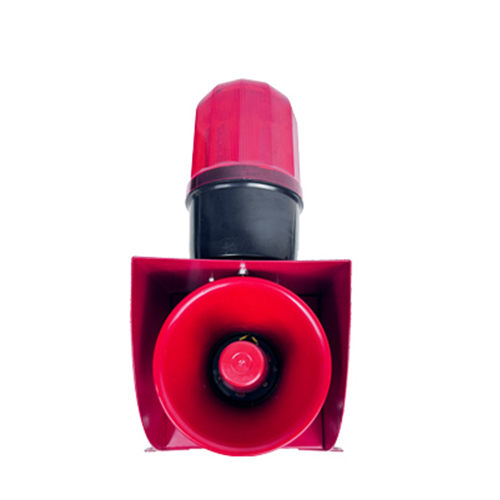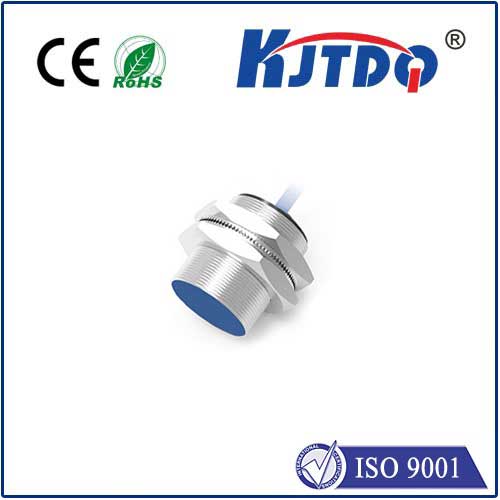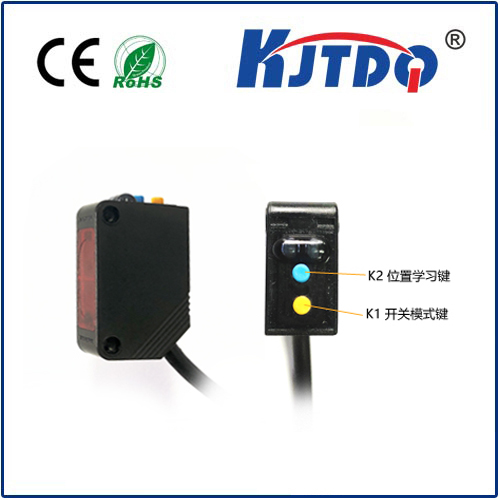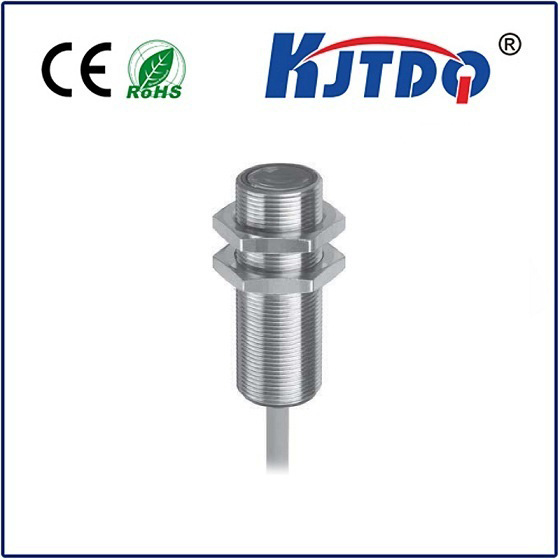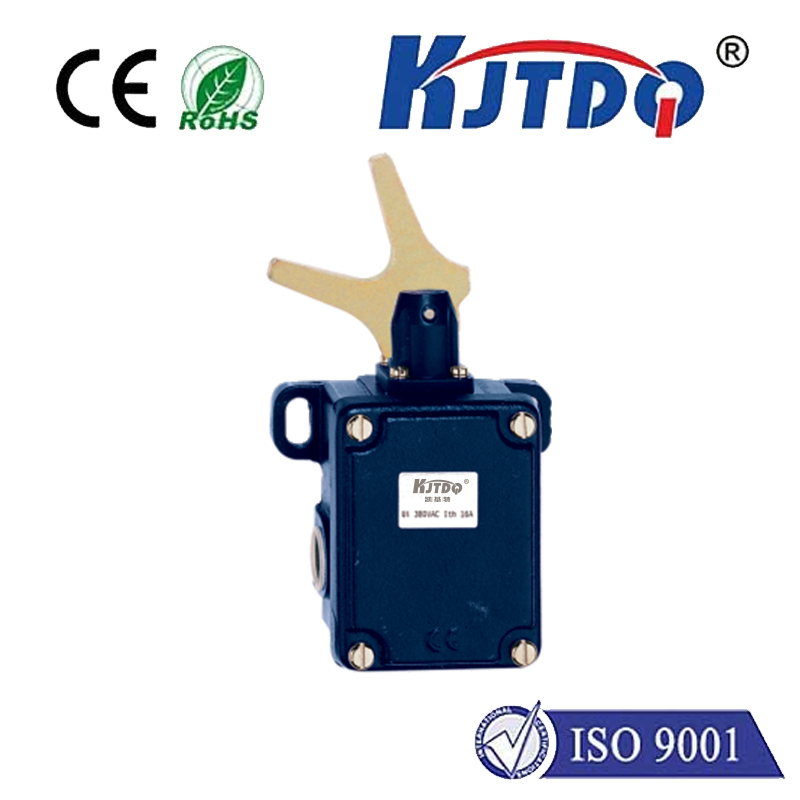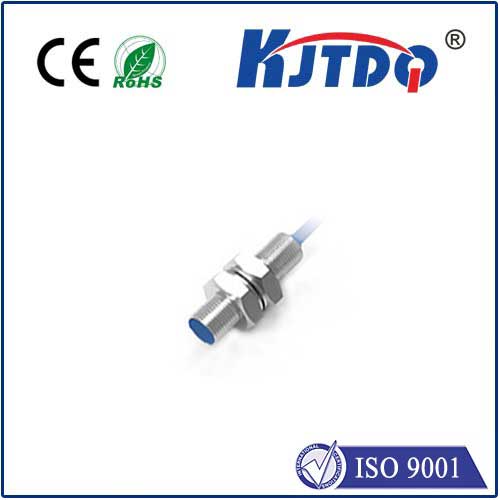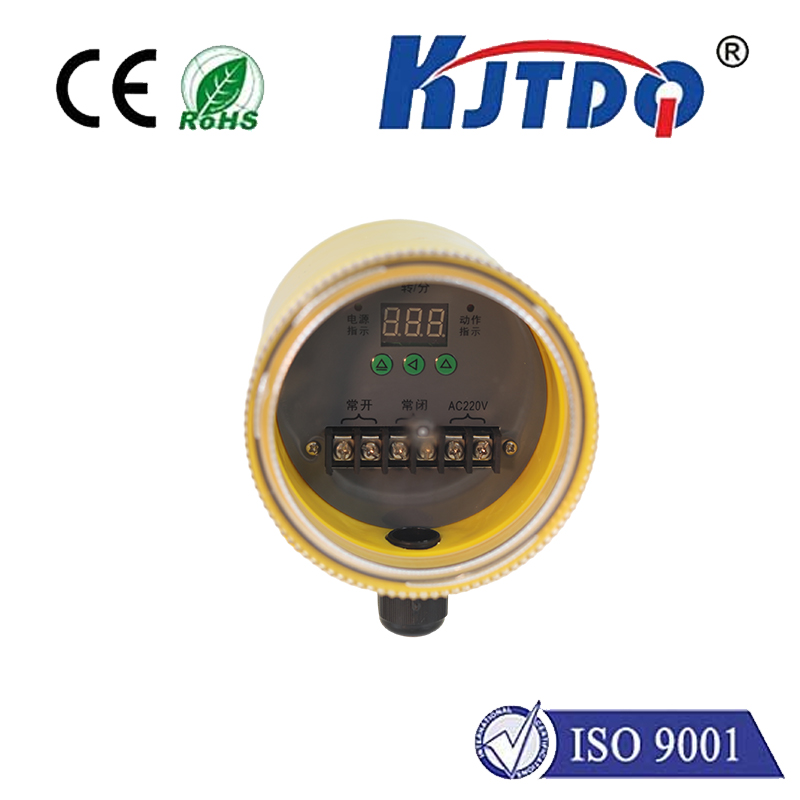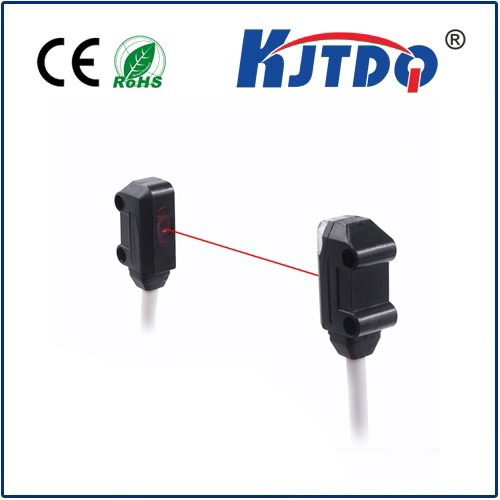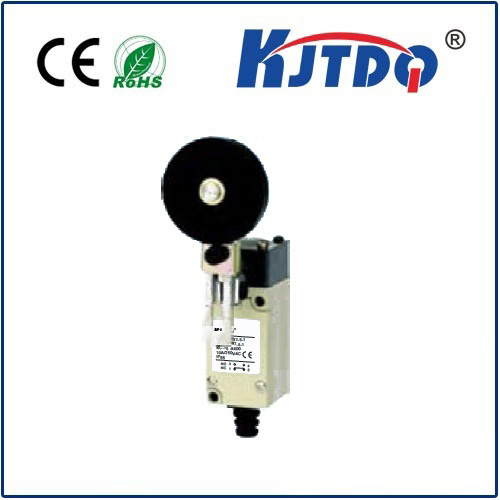E2K-X8ME1 2M proximity sensor
- time:2025-09-24 05:49:20
- Click:0
E2K-X8ME1 2M Proximity Sensor: Precision Long-Range Detection for Industrial Automation
Ever needed reliable object detection from a significant distance in demanding industrial settings? Where standard sensors fall short, the E2K-X8ME1 2M proximity sensor steps in as a specialized solution. Designed for applications requiring extended reach without sacrificing accuracy, this inductive sensor offers a robust answer to unique automation challenges. Understanding its capabilities helps determine when this long-range specialist is the optimal choice for your system.
Fundamentals of the E2K-X8ME1: Inductive Sensing at its Core
The E2K-X8ME1 belongs to the category of inductive proximity sensors. Its core principle involves generating an electromagnetic field from its sensing face. When a metallic object enters this field, it induces small eddy currents within the metal. The sensor detects the resulting change in the field’s oscillation or energy dissipation. Crucially, this detection method is entirely non-contact, meaning there’s no physical touch between the sensor and the target object. This eliminates mechanical wear, significantly enhancing sensor lifespan and reliability compared to mechanical switches.
The Defining Feature: Unlocking the Power of 2000mm Sensing
The “2M” designation prominently featured in the model name E2K-X8ME1 2M is its most critical specification: it signifies a non-contact sensing distance of up to 2000mm (2 meters). This is exceptionally long for a standard inductive proximity sensor, which typically ranges from a few millimeters to, perhaps, 60mm for larger models. Achieving this 2-meter capability requires specialized engineering:

- Optimized Coil Design: Sophisticated coil windings generate a stronger and more focused electromagnetic field that can project effectively over the longer distance.
- Enhanced Signal Processing: Sophisticated electronic circuitry is required to reliably detect the subtle changes in the electromagnetic field caused by a metal target at 2 meters, filtering out electrical noise and environmental interference that could cause false triggers at such ranges.
- Directional Focus: These sensors often have a more directional sensing field compared to standard cylindrical sensors, concentrating energy towards the front to maximize usable range.
This extended reach addresses specific challenges where other inductive sensors or photoelectric sensors might struggle due to mounting constraints, environmental factors obscuring light beams (dust, fog), or simply the physical separation required between machinery and the object being detected.
Key Specifications and Output Configuration
Beyond the headline 2m range, the E2K-X8ME1 incorporates essential features for robust industrial automation performance:
- Output Type: This model features an NPN 3-wire configuration. In simpler terms, it acts like a solid-state switch that sinks current to the common (negative) line when a target is detected within its effective range. Always verify the required output logic (NPN sinking vs. PNP sourcing) for your control system compatibility.
- Operating Principle: True inductive proximity detection, sensing ferrous and non-ferrous metals (though sensing distance can vary significantly based on the target material’s properties and size – consult datasheets for specifics).
- Rugged Construction: Housed in a robust casing, it typically boasts a high IP67 rating (Ingress Protection). This signifies excellent resistance against dust ingress and protection against the effects of temporary immersion in water (up to 1 meter for 30 minutes). This resilience is vital for machinery exposed to washdowns, oil, or outdoor elements.
- Environmental Durability: Engineered to withstand typical industrial stressors like vibration, moderate impacts, temperature fluctuations, and exposure to common coolants or lubricants. Its reliability minimizes costly downtime.
Strategic Applications: Where the E2K-X8ME1 2M Sensor Excels
The unique combination of long-distance detection and robust inductive technology makes the E2K-X8ME1 ideal for scenarios where standard proximity sensors or photoelectrics are impractical:
- Large Machinery Position Verification: Confirming the open/closed status of massive gates, furnace doors, bay doors, or heavy shielding where mounting sensors directly on the moving part is impossible or hazardous.
- Overhead Crane and Hoist Positioning: Detecting the position of crane hooks, trolleys, or spreader frames at significant heights within a facility, ensuring safe operation and preventing collisions.
- Safety Perimeter Monitoring: Establishing non-contact safety zones around hazardous equipment (robotic cells, presses) at a safe distance without impeding access when the equipment is idle.
- Long-Reach Presence Detection: Verifying the presence or absence of large metal objects (coils, rolls, pallets, vehicles) on conveyors, transfer cars, or in staging areas from a remote mounting point.
- Material Handling Control: Detecting metal components on extended transfer chutes or racks where access for sensor mounting is limited.
- Automotive Production Lines: Monitoring the position of large fixtures, car bodies on skids, or robotic end-effectors traversing wide assembly cells.
Advantages Driving Adoption in Industry
Choosing the E2K-X8ME1 2M proximity sensor offers distinct operational benefits:
- Overcoming Mounting Limitations: Solves problems where physical constraints prevent installing sensors close to the detection point.
- Enhanced Reliability vs. Opto: Immune to environmental factors that plague optical sensors: dust, smoke, fog, steam, and varying light conditions pose no issue. Its solid-state nature also avoids mechanical failure points.
- Robust Performance: Built to endure the harsh realities of manufacturing, processing, and heavy industrial environments, ensuring long-term, maintenance-free operation. The IP67 protection is a key contributor here.
- Precision and Repeatability: Provides highly consistent and accurate detection at its specified range under defined conditions.
- Simplified Installation: Compared to complex mechanical limit switches or potentially finicky long-range photoelectric setups with alignment needs, the inductive proximity sensor is often easier to install and align, especially its directional type.
Implementing Effectively: Crucial Considerations
To maximize the performance of the E2K-X8ME1 2M sensor, careful planning is essential:
- Target Material and Size: Inductive sensors vary in sensing distance based on the target’s metal type (steel offers the longest range, aluminum and copper less so) and its physical size relative to the sensor head. A small bolt at 2 meters will likely not be reliably detected. Large pallets or machine frames are ideal targets. Always refer to the detailed reduction factor tables in the sensor’s datasheet.
- Mounting Position: Ensure the sensor’s face is oriented correctly towards the expected path of the target. Mounting brackets must be rigid to prevent vibration or misalignment, which could drastically affect detection reliability at maximum range.
- Environmental Factors: While immune to many optical interferences, extremely strong magnetic fields near large motors, transformers, or welding equipment could potentially influence sensor operation. Assess the installation environment.
- Electrical Compatibility: Confirm that the NPN output configuration integrates correctly with your PLC, safety relay, or control system’s input module. Ensure correct polarity and power supply voltage matching.
The E2K-X8ME1 2M inductive proximity sensor embodies specialized engineering for demanding industrial tasks requiring reliable non-contact metal detection at distances unattainable by conventional proximity switches. Its blend of long-range capability (2000mm), inherent robustness (IP67), immunity to environmental interference, and solid-state reliability makes it an indispensable tool for automation engineers tackling specific challenges in material handling, large-scale machinery monitoring, safety applications, and complex production lines. When standard sensors can’t reach, the E2K-X8ME1 provides the vital connection.






